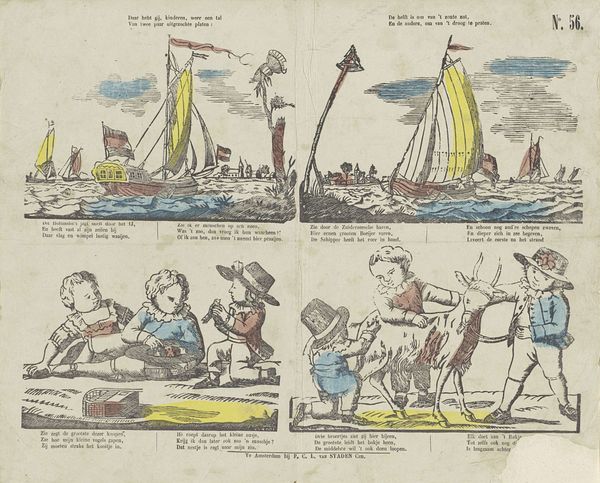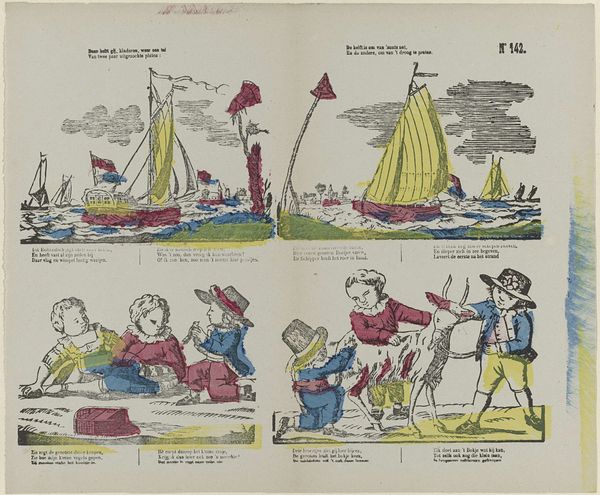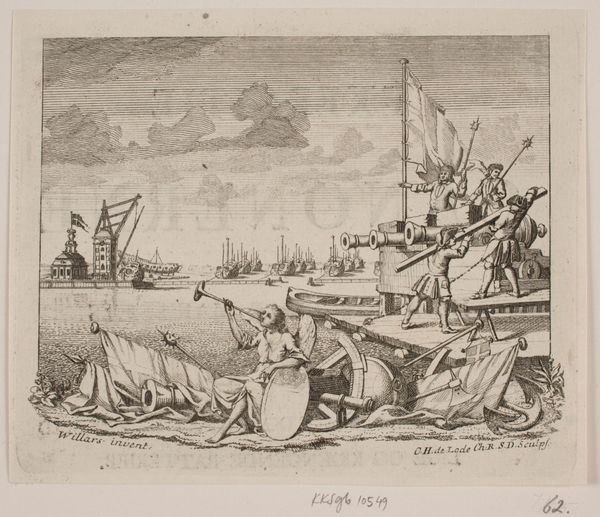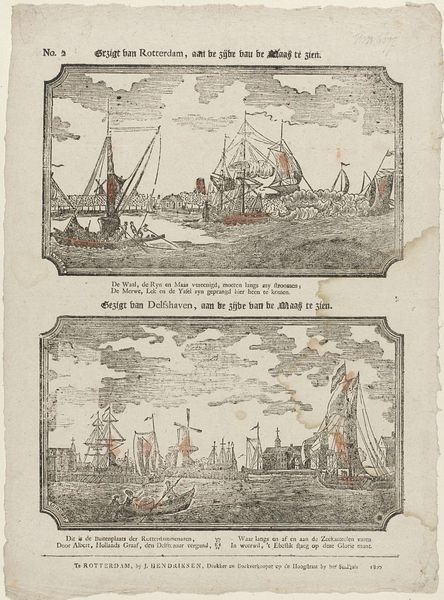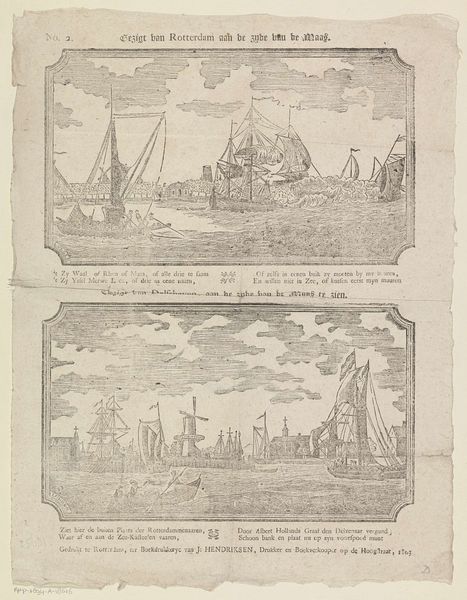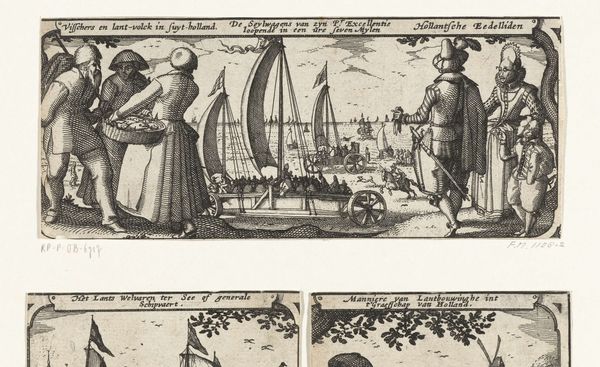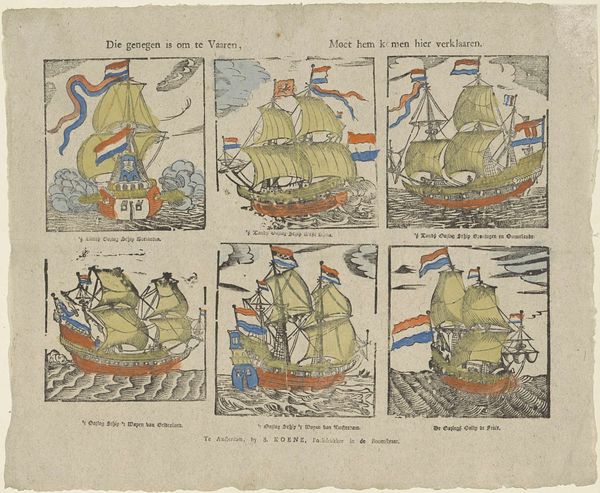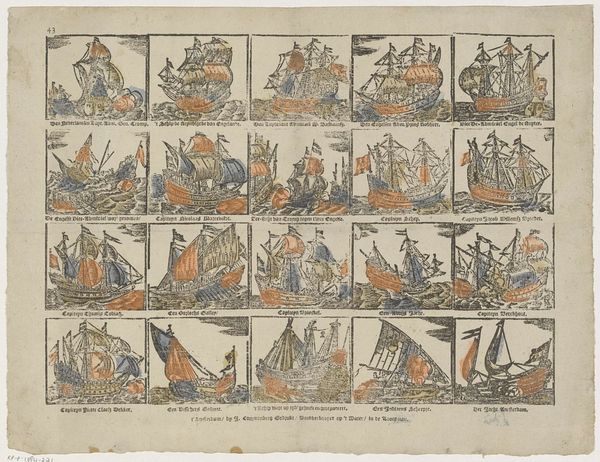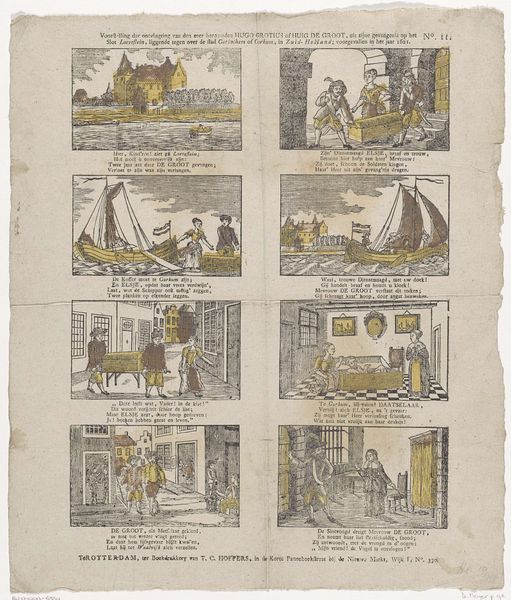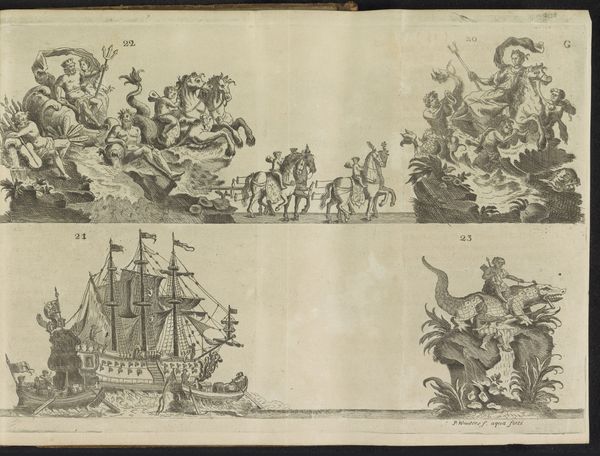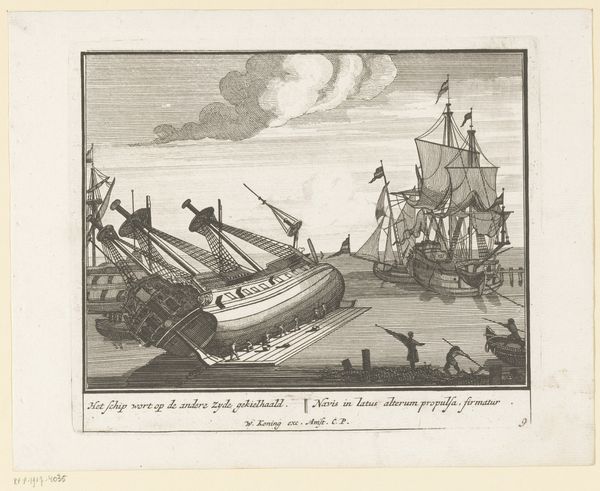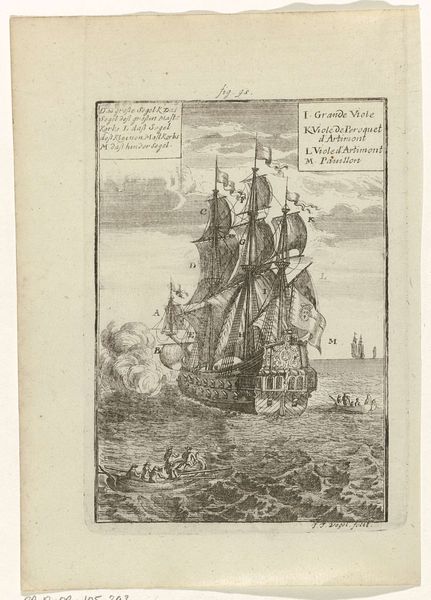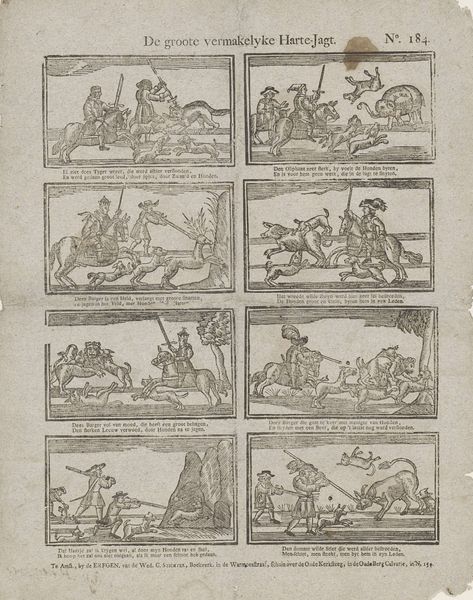
Dit viertal prenten zal gewis uw keuze smaaken, / Ô schooljeugd! wil 'er dan, leerend, meê vermaaken 1715 - 1813
0:00
0:00
Dimensions: height 325 mm, width 417 mm
Copyright: Rijks Museum: Open Domain
Curator: This print, dating from around 1715 to 1813, is titled "Dit viertal prenten zal gewis uw keuze smaaken, / O schooljeugd! wil 'er dan, leerend, meê vermaaken," which roughly translates to "These four prints will surely suit your choice, / O schoolchildren! wish to entertain yourself, learning with it." It's attributed to the heirs of widow Cornelis Stichter. Editor: It feels like a glimpse into childhood, doesn’t it? A little moralistic perhaps, given the text, but still charming with its vignettes. There’s a real sense of simple pleasures conveyed here despite its Baroque-era rendering. Curator: Indeed. Created using engraving, the piece shows a distinct attention to the daily lives and pastimes of children alongside maritime imagery which we can further understand from its inclusion in the Rijksmuseum's collection. Genre painting and cityscapes are evident, typical for reflecting societal values through art. The distribution method and use by "erven weduwe Cornelis Stichter" provides insight into art consumption patterns and production in this period. Editor: And how these narratives unfold. The presence of ships points toward trade and exploration, themes of venturing into the unknown that perhaps mirror a child's journey of discovery, learning, and growing. The small goat ridden by children may be representative of innocence being both guided and tested, suggesting childhood and its related ideals is something both naturally spirited and susceptible to direction by forces like school. Curator: A subtle commentary on societal influence in children. These seemingly harmless scenes acted as instruments of instruction and moral guidance during a period of profound social change. What seems simple carries underlying narratives reflecting didactic social conventions. Editor: I agree. The work reveals how the seemingly simple images embed messages in a society eager to imprint lasting wisdom on rising generations and it really speaks to how childhood imagery acts as this persistent canvas of our cultural hopes and anxieties. Curator: The act of printing allowed wider distribution and accessible education, especially for young readers. Editor: Well, it gives us a tangible link to that intersection of commerce, art, and moral persuasion. Seeing childhood represented in prints underscores the societal impulse to shape them.
Comments
No comments
Be the first to comment and join the conversation on the ultimate creative platform.
